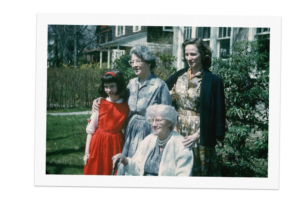Overlooked No More: Katharine Briggs and Isabel Myers, Creators of a Personality Test
In the pivotal early months of World War II, as Hitler’s armies tore through Europe, a part-time crime writer and mother of two in Swarthmore, Pa., came across a Reader’s Digest article with the headline, “Fitting the Worker to the Job.”
The article struck a chord. Isabel Briggs Myers had by then volunteered as an aircraft spotter for the Civil Air Patrol and as a nurse with the Red Cross. She had thought long and deeply about the importance of matching the right people with the right jobs, a crucial process in the run-up to U.S. intervention in Europe.
She sensed the need for what she referred to as a “people sorting instrument” and wrote to the one person who she knew would instantly understand: her mother, Katharine Cook Briggs, a self-educated magazine writer with a passion for the ideas of Carl Jung, the Swiss psychologist and mentee of Freud.
Briggs seized on the idea, and mother and daughter threw themselves into the task, fashioning questions intended to identify people as introverts or extroverts, thinkers or feelers, among other categories, while drawing on Jung’s psychological typology.
The resulting questionnaire, the Myers-Briggs Type Indicator, or M.B.T.I., would become one of the most widely used personality assessments in the world, now a standard at hundreds of corporations and universities and in government. More than two million people take the Myers-Briggs personality test each year.
The enduring popularity of the Myers-Briggs test is rooted not in science — personality tests are notoriously poor predictors of behavior — but in the two women’s ingenuity, commercial instincts and timing. Mid-20th century America was beginning to feel its industrial power and needed measurements for a growing management class. The Rorschach inkblot test was in use, as were the Minnesota Multiphasic Personality Inventory, a 567-item questionnaire, and the Thematic Apperception Test, developed by the Harvard psychologist Henry Murray.
But the Myers-Briggs test had an intrinsic thematic quality that the others lacked. Most existing tests concluded that each personality category had a positive and a negative: An extrovert was good, an introvert was bad, for instance. But Myers felt that each personality type had strengths and weaknesses. Rather than build a test that favored one over another, hers was judgment-free. She and her mother described their personality types in terms of strengths and “gifts” and how those could clarify whether a person was the right “fit” for a job, a career or even a social affair. It felt simultaneously analytic and supportive, giving people a language to describe their best selves.
“We sometimes say that Isabel was the first positive psychologist,” Elizabeth Styron, chairwoman of the nonprofit Center for Applications of Psychological Types, an M.B.T.I. research center, said in a phone interview, referring to a branch of psychology that took off in the 1980s. “It’s about what’s right with a person, not what’s wrong with a person.”
The mother-daughter team became a creative sales force as well. Myers tweaked and promoted her product while searching for guinea pigs. Her son’s high school class took the test, as did incoming students to the George Washington University medical school. Soon dozens of medical schools around the country were added to her list. She wrote all the questions (for instance “Do you prefer to a) eat to live, or b) live to eat?”) and scored all the tests by hand.
